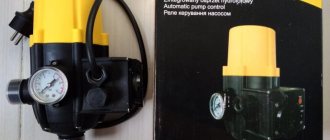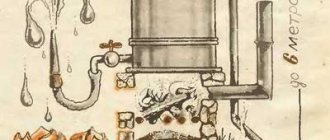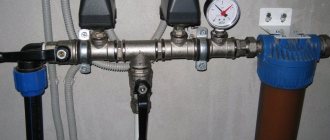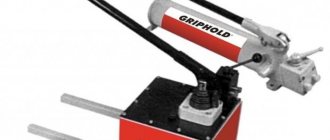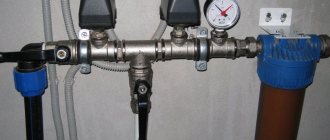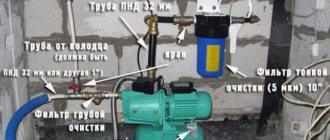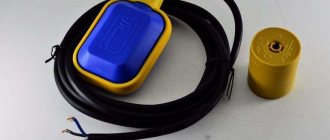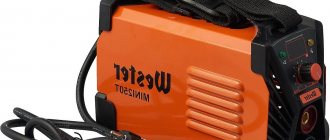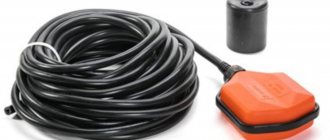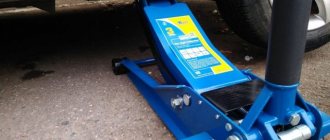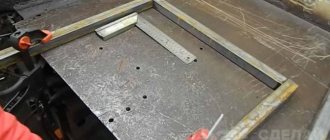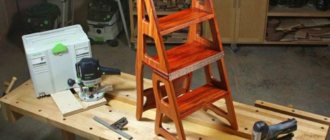Dry running relay is an electromechanical device for shutting off a pumping station, surface, drainage, or well pump in the event of interruption of the pumped liquid supply. When the pipeline reaches the set parameters, the device opens the electrical circuit and stops the supply of current to the pump.
What is dry running of a pump?
The pump must draw water from somewhere. Most often, a well is made or a well is dug for this purpose. A situation may arise where water stops flowing.
For example, the life of the well has expired or the weather is hot, underground moisture in the well does not have time to accumulate.
In this case, if the pump does not turn off, the so-called dry running occurs. Some call it "single", but this term is not entirely applicable to this situation.
- This situation is fraught not only with the fact that electricity is wasted.
- Water is also needed to cool the device. If it does not flow, the pump overheats and breaks down.
- Now the market sells both devices with built-in automatic protection and those without it.
You can purchase additional automation at any time. And it is better to do this as soon as the pump is purchased. In addition, purchasing everything separately will be much cheaper.
Required tools and materials
To connect the pressure switch and dry running protection relay, you will need to prepare:
- The relays themselves.
- Tools for working with electrical wires: contact stripping knife, screwdrivers.
- Wires to create an electrical circuit.
- Keys for installing relays on highways.
- Means for sealing connections: sealants, rubber gaskets (usually included with the relay).
Having prepared everything you need, you can start working.
Causes of dry running
The most common cause of pump failure is dry running. And this will not be a warranty case, that is, the money spent will not be returned. Because both the manufacturer and the seller always warn about this.
If this happens, it is entirely the fault of the owner, who improperly operated the device. There may be several reasons for this situation:
- The depth was selected incorrectly during installation. As a rule, it is calculated individually and depends on how deep the well or well is. The fluid level will constantly change as it is consumed. And as soon as it reaches the place where the unit was placed, it will stop swinging, because there will be nothing left to pump. It will overheat and break;
- The pump successfully pumps water, but it runs out. This may well be because moisture, like any other resource, must be given time to recover. That is why sometimes the device is turned off manually until the water is restored to the required volume;
- If you have a surface installation, its seal may become compromised over time. Then air begins to be sucked in along with the water, which is where the breakdown occurs after some time.
There are not many reasons, but each of them deserves attention, because otherwise the money will be wasted.
Review of products from the best manufacturers
Companies whose product range includes double-circuit boilers offer users highly specialized additional equipment, among which flow sensors occupy a special niche.
Electrolux products are compatible with the GCB 24 X FI and GCB 24 XI series, their weight is only 150 g, the maximum operating pressure is 1.5 Pa. The dimensions of the devices are compact - 40x115x45 mm, the pressure range does not exceed 3 bar, the upper limit of permissible environmental humidity is 70%.
Viessmann Vitopend WH1D
The Visman flow sensor is installed in the gas boiler on the left side of the hydraulic unit. This element is necessary to control the parameters and performance of the hot water flow. The model is designed for the Vitopend and Vitopend 100 series.
Ariston GENUS CLAS B 24
The Genus Ariston sensor is necessary to coordinate water heating with a gas boiler. When the flow occurs, a signal is sent to the electronic board of the latter, as a result the equipment switches to operating mode. A magnetic float is enclosed in a composite plastic case; it acts on a reed switch, the contacts of which close (the boiler begins producing hot water) or open (heating is provided).
Grundfos UPA 120
The device protects the pump from idling and is implemented in individual water supply systems. The automation functionality requires ensuring a stable fluid flow of at least 90-120 l/hour. The device protection class is IP65, the power consumption of this budget model does not exceed 2.2 kW. The operating temperature limits are kept in the positive range - from 5 to 60°C, 8 A is an indicator of the maximum current consumption.
Widely used in domestic water supply systems, the basis for its operation is the actual water consumption. The sensor is capable of monitoring the pressure level in the water supply. The pump starts only when the monthly water flow reaches 1.5 liters. The degree of protection of the unit is IP65, the operating voltage is in the range of 220-240 V. Power consumption is kept at around 2.4 kW.
Immergas 1.028570
Initially, the model was designed for use with boilers of the same brand; it is compatible with double-circuit gas equipment of the Victrix 26, Mini 24 3 E, Major Eolo 24 4E series. The device can be used with boilers of turbocharged and chimney versions. The sensor is enclosed in a plastic housing and equipped with a threaded element for integration into the system. An additional option is the ability to obtain hot water at the outlet that has a stable temperature.
A significant segment of water flow sensors for boilers is supplied complete with heating equipment, so the need for their installation arises only in the event of a breakdown, when you have to think about a commensurate replacement. A rare case when a separate installation of the device is planned is the need to increase the pressure of the liquid supplied to the system. A similar situation occurs if the central water supply is characterized by low pressure, barely reaching the needs of the boiler. In order for a gas appliance to be able to provide the proper quality of hot water supply, it must deal with good pressure.
To solve this problem, install an additional circulation pump and equip it with a water flow sensor (the components must be introduced into the system in this order). As water begins to flow, the device activates the pump, which leads to an increase in pressure.
Homemade models are made from a chamber that will be used in conjunction with three horizontally mounted plates
It is important that the latter do not contact each other and do not touch the flask
For the simplest modifications, the introduction of one float is sufficient. The fitting should be mounted in tandem with two adapters, the maximum permissible valve pressure is 5 Pa.
Effective operation of pumping equipment is the key to uninterrupted water supply and functioning of the heating system in a private home. If you want to enjoy the benefits of civilization every day, you must make every effort to set it up correctly.
The solution to this problem includes a wide range of work, the main one being the installation of additional equipment that will help to clearly monitor possible failures in the system and prevent pump failure.
The most popular and useful in everyday life are such auxiliary devices as: a temperature sensor, as well as a water flow sensor. It is the properties and operational features of the latter device that will be discussed in this article.
How to protect against dry running
To do this, you can purchase several devices, the installation of which will protect against premature repair or replacement:
- Protective relay;
- Installation of liquid flow control;
- Level sensors.
As soon as the water stops flowing, these devices immediately turn off the pump. They each work differently, but they perform the same function. All that remains is to choose the appropriate option for yourself, which seems most effective.
There are also a few tips for installing your equipment to help protect it:
- The installation must be carried out in a warm room that can be heated during the cold season;
- It is necessary to install sound insulation if you plan to place the pump in the house itself;
- It is better to install the remote unit next to the well;
- Monitor your blood pressure levels. To avoid losses, place the station next to the collector.
These tips and a few additional devices will help extend the life of the installation and avoid problems with its breakdown.
Pump dry running protection relay
A simple device that monitors blood pressure levels. As soon as it drops below normal, the automation is activated and turns off the pump. The membrane that is included in the relay device helps to do this.
Under normal conditions, the contact group is open. As soon as the pressure drops, the membrane begins to act on the contacts, they close, and the equipment turns off.
- Usually it is placed on the surface. You can also purchase a sealed model, but it will cost more.
- Works well in any system where a hydraulic accumulator is not provided.
- It is better to purchase for surface pumps; in such systems the relay shows itself most effectively.
- But in installations with a hydraulic accumulator, maximum protection may not be obtained, because the relay may not always work perfectly.
Due to the design of such systems, when liquid can remain in the battery itself, the protection system may behave incorrectly, which is why the risk of breakdown is very high.
You can notice in time that the system is unstable, but there are situations when you notice it too late. Therefore, a relay will not work, but there are other devices.
Briefly about the main thing
A relay that prevents the pump from running dry is an extremely important device. It does not allow idling, which is dangerous due to the failure of the main components of the water supply system.
When choosing a relay, the characteristics of the pump and the level of pressure it creates are taken into account
The installation location of the protection is taken into account, which affects the requirements for its operating parameters. The connection diagram for the relay and related units is selected taking into account the manufacturers’ recommendations
The device is also connected to the electrical network and the protection response limits are set. The relay is adjusted using screws (by turning them in one direction or the other).
The connection diagram for the relay and related units is selected taking into account the manufacturers’ recommendations. The device is also connected to the electrical network and the protection response limits are set. The relay is adjusted using screws (by turning them in one direction or the other).
Flow control equipment
In this case, you can install both controllers, which are electronic, and electromechanical sensors that will monitor the flow of water. Sensors, in turn, are divided into petal and turbine.
The first type is very simple, it is installed directly into the pipeline. At the same time, its petals will deviate, close the contacts, and a shutdown will occur.
Turbines are designed as a turbine that rotates and generates an electromagnetic field. It already affects the sensor itself, which looks at incoming pulses and, depending on this, turns the equipment on or off, thus providing protection.
- The controllers not only protect against dry running, but also monitor pressure.
- They can also be equipped with additional functions, for example, including a pressure gauge.
- They will cost more, but the system will be under reliable protection.
When installing the controller, remember that increased pressure may occur in the system, which will lead to rapid wear. Therefore, sometimes they install both a controller and a hydraulic accumulator. This will allow you to adjust the pressure.
Methodology for performing installation work
The dry running sensor is installed as follows:
- Idling protection must be mounted together with a sensor that measures pressure indicators. The device connection diagram is selected in accordance with the recommendations given in the manufacturer’s instructions.
- Select the area of the system where the device will be installed. Experts recommend doing this on the pipeline leaving the pump. The relay should be located after the pressure sensor.
- In the area where it is planned to install the protective device, a tee fitting is installed.
- Water is drained from the pipeline on which the installation takes place. Remove the cover and liner from the device and attach it to the fitting. The thread must be sealed using plumbing tape.
- A break is made in the cable that powers the pump. A protective relay is inserted into this section. When the sensor contacts open, the electrical current is cut off, causing the pump to shut down.
Pump water level sensors
You can install a float or electronic sensor. They are usually used if the pump is submersible, although they work quite effectively with surface models.
The simple operation of a floater is that it works as long as the float is in the upward position.
As soon as the water level changes, the float also changes its position, the automation is activated and the pump is turned off.
- Electronic ones work not only to reduce the water level, but also to increase it.
- They are also useful for use in swimming pools when water is supplied to it.
- They consist of two electrodes, one is set to minimum, and the second is slightly lower.
- As long as the water is at the optimal level, currents flow between them.
As soon as the level becomes critical, the current stops flowing, the circuit breaks, and a signal of water shortage is received. The pump immediately turns off.
Design features
The main tasks that water flow control sensors installed in domestic pipelines solve are to turn off pumping equipment at a time when there is no liquid in the system or its flow pressure exceeds the standard value, and turn it on again when the pressure drops. An effective solution to these important problems is provided by the sensor design, which consists of the following elements:
- a pipe through which water enters the sensor;
- a membrane that makes up one of the walls of the inner chamber of the sensor;
- a reed switch that provides closing and opening of the pump power supply circuit;
- two springs of different diameters (the degree of their compression regulates the pressure of the fluid flow, at which the water flow switch for the pump will operate).
Main components of an industrial flow sensor
The device of the above-described design works as follows:
- Entering the inner chamber of the sensor, the water flow puts pressure on the membrane, displacing it.
- The magnetic element fixed on the back side of the membrane, when it is displaced, approaches the reed switch, which leads to the closure of its contacts and the pump being turned on.
- If the pressure of the water flow passing through the sensor drops, the membrane returns to its original position, the magnet moves away from the switch, its contacts open, and accordingly, the pumping unit is turned off.
The operating principle of a flow sensor based on a permanent magnet and a reed switch
Sensors that monitor water flow are installed quite simply in pipeline systems for various purposes.
The main thing is to choose the right device, paying attention to its operating parameters and characteristics of the pumping equipment
